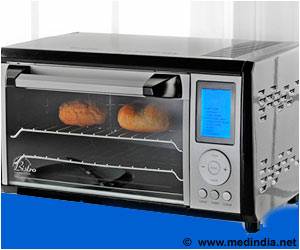
"All of the elements used in this new compound are benign and inexpensive, and should have good solar cell performance," Greg Herman said.
"Several companies are already moving in this direction as prices continue to rise for some alternative compounds that contain more expensive elements like indium.
"With some improvements in its solar efficiency this new compound should become very commercially attractive," he said.
These thin-film photovoltaic technologies offer a low cost, high volume approach to manufacturing solar cells.
A new approach is to create them as an ink composed of nanoparticles, which could be rolled or sprayed - by approaches such as old-fashioned inkjet printing - to create solar cells.
Advertisement
This "one-pot" synthesis is fast, cheap and uses less energy, researchers say, and has been utilized to successfully create nanoparticle inks that were used to fabricate a photovoltaic device.
Advertisement
"Microwave technology offers more precise control over heat and energy to achieve the desired reactions," he added.
The study has been published in Physica Status Solidi A.
Source-ANI









